Goji Berry
How to submit an article:
- Registered users can submit any published journal article that has a unique DOI (Digital Object Identifier) name or link to Research Hub.
- For example, you can paste the full DOI link:
https://doi.org/10.1109/5.771073or just the DOI name:10.1109/5.771073into the field above and click submit. - The person who is first to submit a valid article to Research Hub will forever be credited for it, and every article submission earns you +6 Research Points.
Also known as: Gou Qi Zi, Lycium Barbarum, Wolfberry
Sub-Topics:
Related Topics
Published research studies are articles that present the findings of original research that has undergone a peer-review process and has been made publicly available in scholarly journals, books or other media.
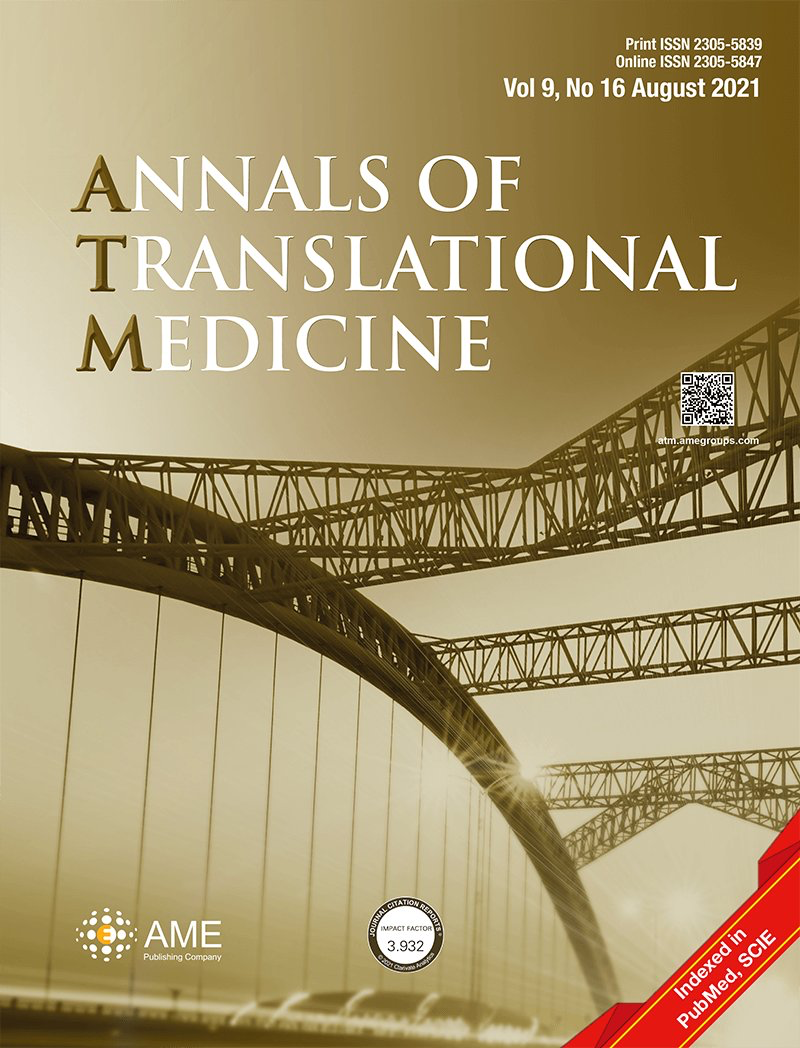
Mechanism and ingredients prediction of Radix Salviae-Angelicae Sinensis Radix-Lycii Fructus-Rehmanniae Radix Praeparata-Ginkgo Folium for retinitis pigmentosa therapy using network pharmacology and molecular docking analysis
2023 Oct Annals of Translational Medicine Wu J, Sun Z, Zhang D, Liu H, Wu J, Zhang S
Network Pharmacology Shu Di Huang Goji Berry Retinitis PigmentosaThe research unveils luteolin, quercetin, and kaempferol in RALRG as promising complementary components for RP treatment, with a key role in managing oxidative stress and PI3K/AKT signaling pathways.
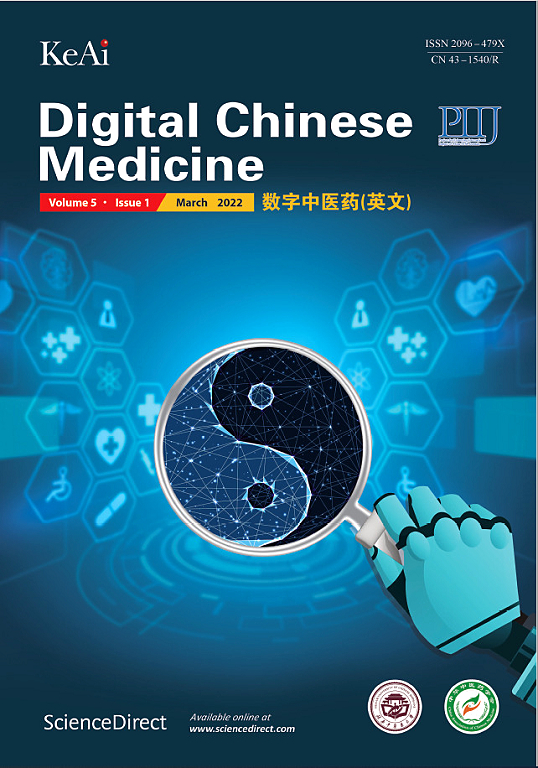
Inhibition of photoreceptor apoptosis in mice with retinitis pigmentosa through NF-κB/NLRP3 pathway suppression with Lycium barbarum polysaccharide
2023 Sep Digital Chinese Medicine Wang Y, Deng Y, Lu J, Peng J, Zhou Y, Yang Y, et al.
Experimental Study Animal Study Goji Berry Retinitis PigmentosaLycium barbarum polysaccharide may decrease apoptosis in retinal photoreceptor cells of retinitis pigmentosa mice by suppressing nuclear factor-kappa B/NOD-like receptor thermal protein domain-associated protein 3 pathway.
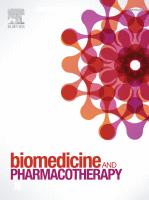
Protective effect of ZYMT, a traditional Chinese patent medicine in a mouse model of retinitis pigmentosa
2023 Jun Biomedicine & Pharmacotherapy Huang Z, Huang Q, Xu K, Liang L, Li Y, Zhou W, et al.
Experimental Study Animal Study Dang Shen Shu Di Huang Huang Qi Ge Gen Goji Berry Zhang Yan Ming Tablets Retinitis PigmentosaZhangyanming Tablets show potential as a protective agent for retinal function in early-stage, genetically-caused blindness in mice, possibly due to their antioxidant and anti-/pro-apoptotic properties.
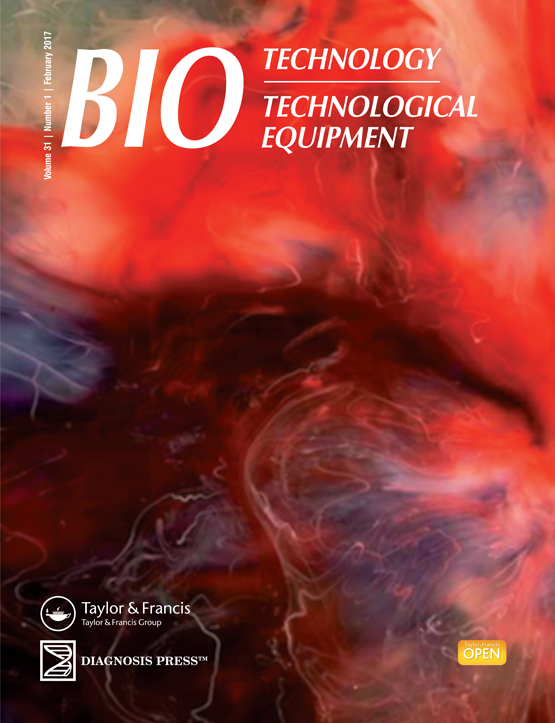
Cardio- and nephroprotective effects of fractions isolated from Lycium barbarum (goji berry) in models of cardio- and nephrotoxicity in rats
2023 Jan 09 Biotechnology & Biotechnological Equipment Hvarchanova N, Stoeva S, Radeva-Ilieva M, Zhelev I, Georgieva M, Dzhenkov D, et al.
Animal Study Cardioprotective Effects CardioprotectiveSpecific fractions of Lycium barbarum, commonly known as Goji berry, reduce heart and kidney damage caused by anthracyclines while possibly enhancing their therapeutic effects.
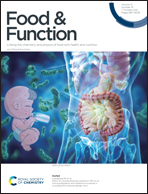
Goji berry leaf exerts a comparable effect against colitis and microbiota dysbiosis to its fruit in dextran-sulfate-sodium-treated mice
2023 Jan Food & Function Yu C, Chen Y, Ahmadi S, Wu D, Wu J, Ding T, et al.
Experimental Study Animal Study Anti-Inflammatory Goji Berry Leaf Gut Microbiota Colitis Anti-ColitisGoji berry leaves have stronger anti-colitis effects than mulberry leaves, ameliorating tissue damage and better regulating inflammatory responses and gut microbiota.
Research insights are moderated by the Research Hub team and offer an at-a-glance overview of interesting research findings.

2023 Annals of Translational Medicine
The research unveils luteolin, quercetin, and kaempferol in RALRG as promising complementary components for RP treatment, with a key role in managing oxidative stress and PI3K/AKT signaling pathways.
Network Pharmacology Retinitis Pigmentosa Shu Di Huang
Mechanism and ingredients prediction of Radix Salviae-Angelicae Sinensis Radix-Lycii Fructus-Rehmanniae Radix Praeparata-Ginkgo Folium for retinitis pigmentosa therapy using network pharmacology and molecular docking analysis
Wu J, Sun Z, Zhang D, Liu H, Wu J, Zhang S

2023 Digital Chinese Medicine
Lycium barbarum polysaccharide may decrease apoptosis in retinal photoreceptor cells of retinitis pigmentosa mice by suppressing nuclear factor-kappa B/NOD-like receptor thermal protein domain-associated protein 3 pathway.
Experimental Study Retinitis Pigmentosa
Inhibition of photoreceptor apoptosis in mice with retinitis pigmentosa through NF-κB/NLRP3 pathway suppression with Lycium barbarum polysaccharide
Wang Y, Deng Y, Lu J, Peng J, Zhou Y, Yang Y, et al.

2023 Biomedicine & Pharmacotherapy
Zhangyanming Tablets show potential as a protective agent for retinal function in early-stage, genetically-caused blindness in mice, possibly due to their antioxidant and anti-/pro-apoptotic properties.
Experimental Study Dang Shen Ge Gen Huang Qi Retinitis Pigmentosa Shu Di Huang
Protective effect of ZYMT, a traditional Chinese patent medicine in a mouse model of retinitis pigmentosa
Huang Z, Huang Q, Xu K, Liang L, Li Y, Zhou W, et al.

2023 Biotechnology & Biotechnological Equipment
Specific fractions of Lycium barbarum, commonly known as Goji berry, reduce heart and kidney damage caused by anthracyclines while possibly enhancing their therapeutic effects.
Animal Study Cardioprotective Cardioprotective Effects
Cardio- and nephroprotective effects of fractions isolated from Lycium barbarum (goji berry) in models of cardio- and nephrotoxicity in rats
Hvarchanova N, Stoeva S, Radeva-Ilieva M, Zhelev I, Georgieva M, Dzhenkov D, et al.

2023 Food & Function
Goji berry leaves have stronger anti-colitis effects than mulberry leaves, ameliorating tissue damage and better regulating inflammatory responses and gut microbiota.
Experimental Study Anti-Colitis Anti-Inflammatory Colitis Goji Berry Leaf Gut Microbiota
Goji berry leaf exerts a comparable effect against colitis and microbiota dysbiosis to its fruit in dextran-sulfate-sodium-treated mice
Yu C, Chen Y, Ahmadi S, Wu D, Wu J, Ding T, et al.
Review Articles
Review articles summarise and critically evaluate the current state of research on a specific topic or field by synthesising multiple primary research studies.
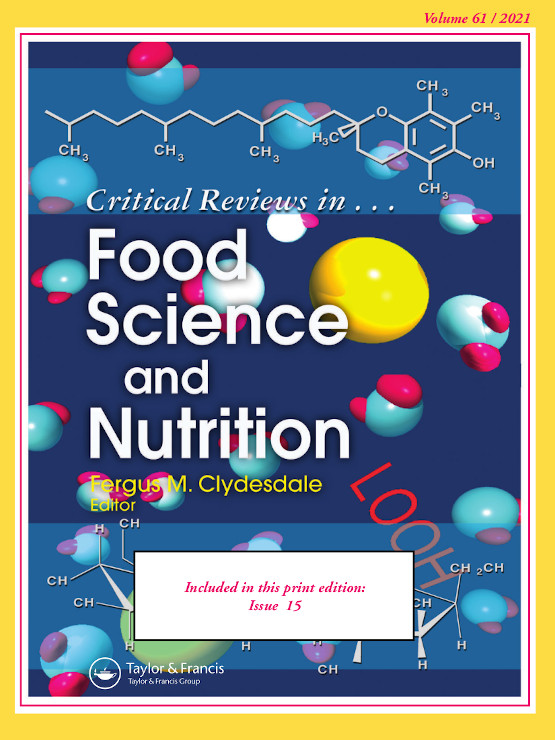
Prebiotic effects of goji berry in protection against inflammatory bowel disease
2022 Jan 06 Critical Reviews in Food Science and Nutrition Sun Q, Du M, Kang Y, Zhu MJ
Review Article PrebioticGoji berries, notably their polysaccharides, exhibit protective effects against inflammatory bowel disease through the preservation of healthy gut microbiota.
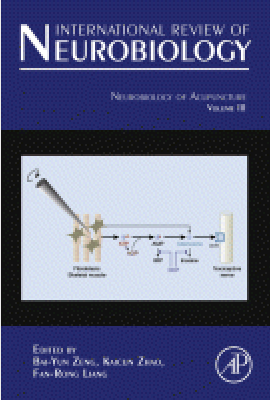
Chapter 35 - Lycium barbarum (goji berry), human breast cancer, and antioxidant profile
2021 Jan 1 International Review of Neurobiology Anna Wawruszaka,Marta Halasaa,Karolina Oklab
Review Article Goji Berry AnticancerGoji berries have significant potential as a natural medicine in anticancer efforts due to their high content of active compounds.
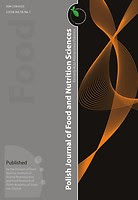
Goji Berry (Lycium barbarum): Composition and Health Effects – a Review
2016 Jun 30 Polish Journal of Food and Nutrition Sciences Kulczyński B, Gramza-Michałowska A
Review Article Goji Berry CancerGoji berries, classified as superfruits, possess potential beneficial implications in the dietary prevention of diseases like diabetes, cardiovascular diseases, and cancer.
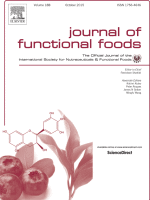
Goji berry fruit (Lycium spp.): antioxidant compound fingerprint and bioactivity evaluation
2015 Sep Journal of Functional Foods D. Donno, G.L. Beccaro, M.G. Mellano, A.K. Cerutti, G. Bounous
Systematic Review AntioxidantThe antioxidants present in goji berries have comparable health-promoting properties to those found in other common fruits.
Goji berry was identified as a rich source of antioxidant compounds, with health-promoting properties comparable with other common fruit species.
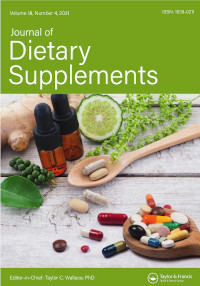
An Evidence-Based Systematic Review of Goji (Lycium spp.) by the Natural Standard Research Collaboration
2014 May 7 Journal of Dietary Supplements Ulbricht C, Bryan JK, Costa D, Culwell S, Giese N, Isaac R, et al.
Systematic Review Goji BerryGoji (Lycium spp.) has a consolidated safety and efficacy profile, based on scientific literature, clinical trials, expert opinions, history, pharmacology, interactions, adverse effects, toxicology, and dosing.
Can't find full article — 18 Aug 2021
Clinical Trials
Clinical trials are research studies that involve people and are conducted to evaluate the safety and efficacy of new treatments or interventions, such as drugs, medical devices, or behavioural therapies.

Goji Berry Intake Increases Macular Pigment Optical Density in Healthy Adults: A Randomized Pilot Trial
2021 Dec 09 Nutrients Li X, Holt RR, Keen CL, Morse LS, Yiu G, Hackman RM
Randomised Controlled TrialRegular intake of goji berries can increase Macular Pigment Optical Density, potentially helping to prevent or delay the development of age-related macular degeneration.
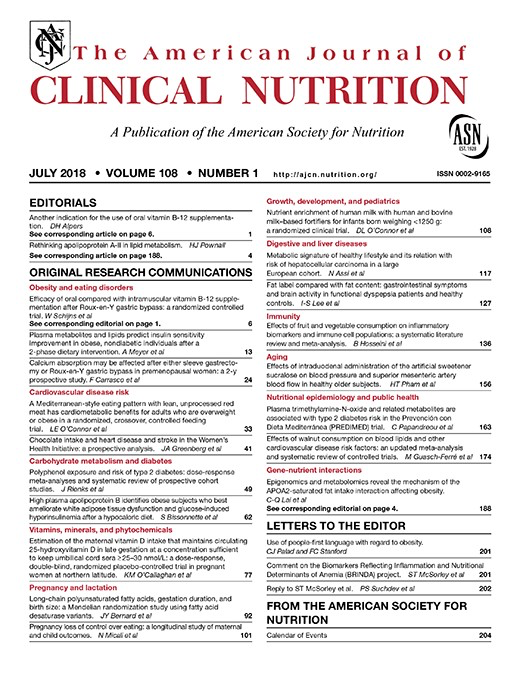
A novel botanical formula improves eye fatigue and dry eye: a randomized, double-blind, placebo-controlled study
2020 Aug The American Journal of Clinical Nutrition Kan J, Wang M, Liu Y, Liu H, Chen L, Zhang X, et al.
Randomised Controlled Trial Blackcurrant Zeaxanthin ChrysanthemumA botanical formula of lutein ester, zeaxanthin, and extracts from blackcurrant, chrysanthemum, and goji berry can effectively lessen eye fatigue and improve macular function.
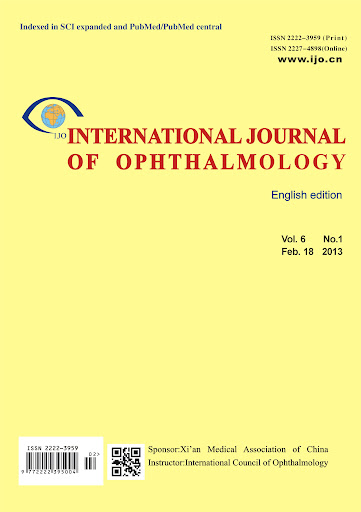
Macular pigment and serum zeaxanthin levels with Goji berry supplement in early age-related macular degeneration
2018 Jun 18 International Journal of Ophthalmology Shang Li, Na Liu, Li Lin, et al.
Randomised Controlled Trial Age-Related Macular Degeneration ZeaxanthinGoji berry supplementation can improve macular pigment and visual acuity in patients with early age-related macular degeneration by increasing serum zeaxanthin levels.
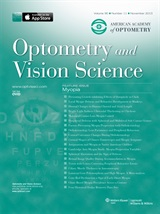
Goji Berry Effects on Macular Characteristics and Plasma Antioxidant Levels
2011 Feb Optometry and Vision Science Bucheli P, Vidal K, Shen L, Gu Z, Zhang C, Miller LE, et al.
Randomised Controlled Trial Goji Berry Eye Health Antioxidant ZeaxanthinDaily goji berry supplementation increases antioxidant levels and protects visual health in the elderly, though the exact mechanism remains unclear.
Study Protocols
Published study protocols are detailed plans that outline the objectives, methodology, statistical analyses, and organisation of a research study that have been made publicly available for others to review and use as a reference.
Presentation Slides

Network Pharmacology
The research unveils luteolin, quercetin, and kaempferol in RALRG as promising complementary components for RP treatment, with a key role in managing oxidative stress and PI3K/AKT signaling pathways.
Wu J, Sun Z, Zhang D, Liu H, Wu J, Zhang S

Experimental Study
Lycium barbarum polysaccharide may decrease apoptosis in retinal photoreceptor cells of retinitis pigmentosa mice by suppressing nuclear factor-kappa B/NOD-like receptor thermal protein domain-associated protein 3 pathway.
Wang Y, Deng Y, Lu J, Peng J, Zhou Y, Yang Y, Peng Q

Experimental Study
Zhangyanming Tablets show potential as a protective agent for retinal function in early-stage, genetically-caused blindness in mice, possibly due to their antioxidant and anti-/pro-apoptotic properties.
Huang Z, Huang Q, Xu K, Liang L, Li Y, Zhou W, Ning N, Zhou J, Hu J, Liu S, Dang L

Animal Study
Specific fractions of Lycium barbarum, commonly known as Goji berry, reduce heart and kidney damage caused by anthracyclines while possibly enhancing their therapeutic effects.
Hvarchanova N, Stoeva S, Radeva-Ilieva M, Zhelev I, Georgieva M, Dzhenkov D, Georgiev KD

Experimental Study
Goji berry leaves have stronger anti-colitis effects than mulberry leaves, ameliorating tissue damage and better regulating inflammatory responses and gut microbiota.
Yu C, Chen Y, Ahmadi S, Wu D, Wu J, Ding T, Liu D, Ye X, Chen S, Pan H
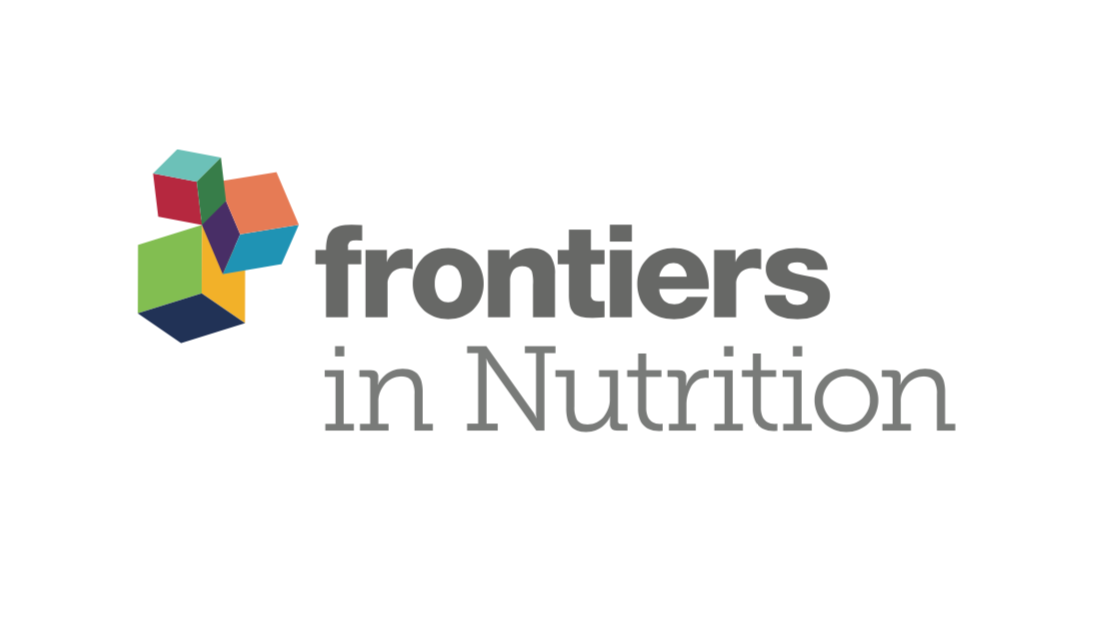
Experimental Study
Goji berry supplementation can potentially improve gut microbiota and prevent liver injury caused by acute alcohol consumption.
Guo L, Guan Q, Duan W, Ren Y, Zhang XJ, Xu HY, Shi JS, Wang FZ, Lu R, Zhang HL, Xu ZH, Li H, Geng Y

Review Article
Goji berries, notably their polysaccharides, exhibit protective effects against inflammatory bowel disease through the preservation of healthy gut microbiota.
Sun Q, Du M, Kang Y, Zhu MJ

Randomised Controlled Trial
Regular intake of goji berries can increase Macular Pigment Optical Density, potentially helping to prevent or delay the development of age-related macular degeneration.
Li X, Holt RR, Keen CL, Morse LS, Yiu G, Hackman RM

Experimental Study
Zeaxanthin dipalmitate, a wolfberry-derived carotenoid, can delay retinal degeneration in mice modelling Retinitis Pigmentosa mainly through its anti-inflammatory and oxidative stress effects.
Liu F, Liu X, Zhou Y, Yu Y, Wang K, Zhou Z, Gao H, So KF, Vardi N, Xu Y
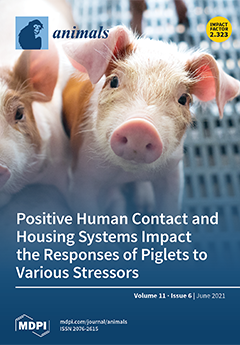
Animal Study
Goji berry supplementation in does' diet positively influences both their reproductive and productive performance, likely through adjustment of hormonal patterns and milk production.
Andoni E, Curone G, Agradi S, Barbato O, Menchetti L, Vigo D, Zelli R, Cotozzolo E, Ceccarini MR, Faustini M, Quattrone A, Castrica M, Brecchia G

Review Article
Goji berries have significant potential as a natural medicine in anticancer efforts due to their high content of active compounds.
Anna Wawruszaka,Marta Halasaa,Karolina Oklab

Experimental Study
The Lycium ruthenicum Murr variety of goji berry exhibits a stronger antioxidant activity and antiproliferative effect on cancer cells compared to Lycium barbarum L.
Xiong L, Deng N, Zheng B, Li T, Liu RH

Randomised Controlled Trial
A botanical formula of lutein ester, zeaxanthin, and extracts from blackcurrant, chrysanthemum, and goji berry can effectively lessen eye fatigue and improve macular function.
Kan J, Wang M, Liu Y, Liu H, Chen L, Zhang X, Huang C, Liu BY, Gu Z, Du J
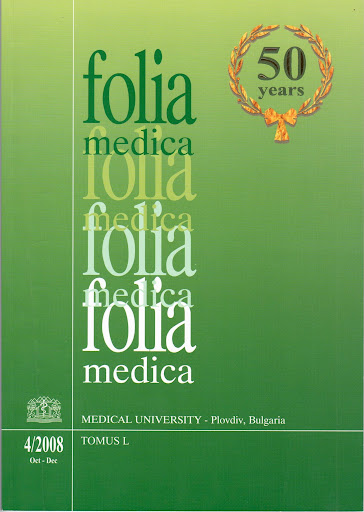
Experimental Study
The pectin-free fraction of Lycium barbarum, or goji berry, strongly inhibits growth in breast cancer cells, and this effect is enhanced by adding polysaccharides.
Georgiev KD, Slavov IJ, Iliev IA.

Experimental Study
The pectin-free fraction from Lycium barbarum fruit exhibits significant antioxidant activity and inhibits the growth of breast cancer cells.
Georgiev KD, Slavov IJ, Iliev IA
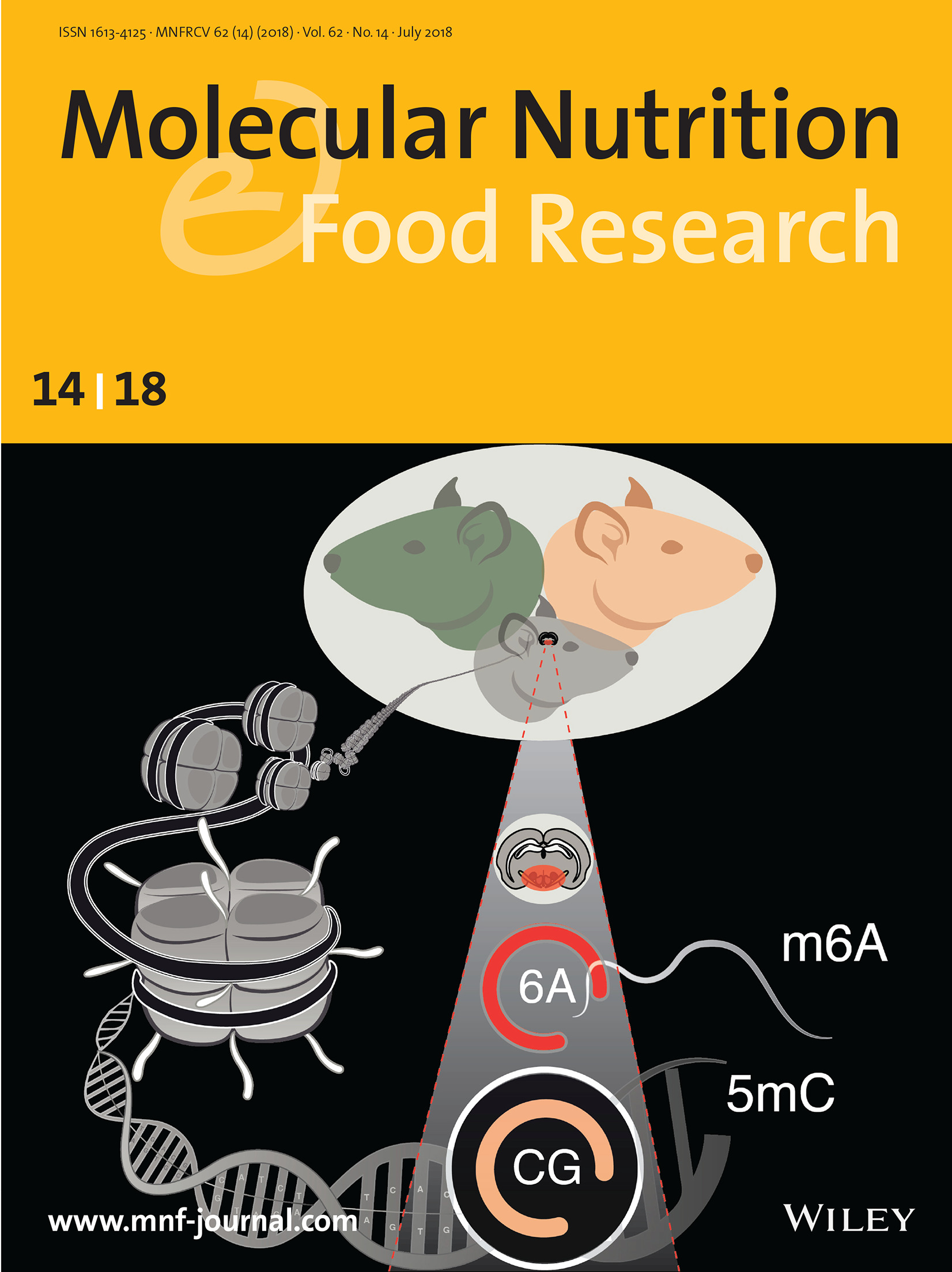
Experimental Study
Dietary supplementation with Goji berries enhances Bifidobacteria and butyrate-producing bacteria growth, resulting in potential preventative effects against colitis.
Kang Y, Yang G, Zhang S, Ross CF, Zhu MJ

Randomised Controlled Trial
Goji berry supplementation can improve macular pigment and visual acuity in patients with early age-related macular degeneration by increasing serum zeaxanthin levels.
Shang Li, Na Liu, Li Lin, et al.

Review Article
Goji berries, classified as superfruits, possess potential beneficial implications in the dietary prevention of diseases like diabetes, cardiovascular diseases, and cancer.
Kulczyński B, Gramza-Michałowska A

Systematic Review
Goji berry was identified as a rich source of antioxidant compounds, with health-promoting properties comparable with other common fruit species.
D. Donno, G.L. Beccaro, M.G. Mellano, A.K. Cerutti, G. Bounous

Systematic Review
The antioxidants present in goji berries have comparable health-promoting properties to those found in other common fruits.
D. Donno, G.L. Beccaro, M.G. Mellano, A.K. Cerutti, G. Bounous

Systematic Review
Goji (Lycium spp.) has a consolidated safety and efficacy profile, based on scientific literature, clinical trials, expert opinions, history, pharmacology, interactions, adverse effects, toxicology, and dosing.
Ulbricht C, Bryan JK, Costa D, Culwell S, Giese N, Isaac R, Nummy K, Pham T, Rapp C, Rusie E, Weissner W, Windsor RC, Woods J, Zhou S

Randomised Controlled Trial
Daily goji berry supplementation increases antioxidant levels and protects visual health in the elderly, though the exact mechanism remains unclear.
Bucheli P, Vidal K, Shen L, Gu Z, Zhang C, Miller LE, Wang J
Executive Summary
Write an executive summary in the form of a blog article on the topic of "Research into Chinese medicine treatment for Goji Berry" summarising the research below and using language that can be easily understood by patients and avoiding medical jargon using a professional and caring tone of voice.
Write an executive summary in the form of a blog article on the topic of "Researched Chinese medicine treatments for Goji Berry" summarising the research below in an objective and easy to understand way, and using language that can be easily understood by patients. Group the article into Chinese medicine treatments first, followed by nutrition and other treatments. Avoid using medical jargon and use a professional and caring tone of voice.
Write me a concise but easy to understand executive summary on the topic of "Chinese medicine treatments for Goji Berry" based on the following research that I will give you. Your summary should be 2 paragraphs long in Australian English spelling and include references to the studies.
A Network Pharmacology published in 2023 in the journal Annals of Translational Medicine found that The research unveils luteolin, quercetin, and kaempferol in RALRG as promising complementary components for RP treatment, with a key role in managing oxidative stress and PI3K/AKT signaling pathways. The research used various databases such as Traditional Chinese Medicine Systems Pharmacology Database and Analysis Platform, GeneCards, and the Online Mendelian Inheritance in Man database to gather the ingredients of RALRG and potential targets of RP and RALRG. A protein-protein interaction network was constructed to visualize these interactions. The R program was utilized to perform functional enrichment. The researchers constructed a visual RALRG-RP-pathway pharmacology network using Cytoscape 3.9.1 and applied molecular docking to compute binding affinity. The research revealed a total of 132 effective active elements in RALRG correlating to 248 target genes. Ninety-two intersection target genes were discovered from the overlap of RP- and RALRG-related genes. These intersection targets were discovered to be primarily involved in oxidative stress, responding to metal ions, and handling chemical stress. Several molecular pathways such as PI3K-AKT and MAPK were identified as closely connected to RP therapy. A potential pharmacology network was designed for the RALRG-RP-pathway with AKT1 and JUN being considered the main targets. The active ingredients luteolin, quercetin, and kaempferol were highlighted as crucial for this mechanism. RALRG overall was established as a main regulator for oxidative stress and PI3K/AKT signaling pathways in the treatment of RP.
A Experimental Study published in 2023 in the journal Digital Chinese Medicine found that Lycium barbarum polysaccharide may decrease apoptosis in retinal photoreceptor cells of retinitis pigmentosa mice by suppressing nuclear factor-kappa B/NOD-like receptor thermal protein domain-associated protein 3 pathway. The team carried out both in vivo and in vitro studies. Initially, mouse retinal ganglion cells were categorized into groups based on the doses of Lycium barbarum polysaccharide they were given and a positive drug control group. These cells were then subject to different H2O2 concentrations to induce apoptosis. Techniques such as flow cytometry, immunofluorescence, and western blot were used to evaluate cell viability, apoptosis rate, and expression of various markers. For in vivo research, the team used C57/BL6 and Rd10 mice divided into similar groups as the in vitro experiment. The mice underwent drug treatment for four weeks, after which their retina's response to light and general health were evaluated using an electroretinogram and histopathological examination. The in vitro experiments showed that the apoptosis rate of ganglion cells significantly increased in the model group, along with up-regulation of certain proteins. However, a high dose of Lycium barbarum polysaccharide decreased the cell apoptosis rate and the levels of certain proteins. Similarly, in vivo testing showed that a high dose of the substance significantly aided in morphological alterations in a retina layer of Rd10 mice, and down-regulated the expression levels of a number of apoptosis-related proteins.
A Experimental Study published in 2023 in the journal Biomedicine & Pharmacotherapy found that Zhangyanming Tablets show potential as a protective agent for retinal function in early-stage, genetically-caused blindness in mice, possibly due to their antioxidant and anti-/pro-apoptotic properties. Eighty mice with Retinitis Pigmentosa (RP) were divided into two groups, with one group receiving Zhangyanming Tablets (ZYMT) and a control group getting distilled water. After a period of 7 and 14 days, the researchers conducted tests through electroretinogram, fundus photography, and histological examination to assess the retinal function and structure of the subjects. They furthered the study using TUNEL, immunofluorescence and qPCR to evaluate cell apoptosis and the expressions of particular genes. The ZYMT-treated mice displayed a notable enhancement in retinal reactions and overall preservation of retinal structure when compared to the control group. Particularly noticeable were increases in retinal thickness and cell count, alongside a significantly lowered rate of cell death. A comprehensive follow-up shows the altered expressions of several genes in the retina following the application of ZYMT. These results, combined, suggest a key role of ZYMT in mitigating the effects of RP especially in early stages.
A Animal Study published in 2023 in the journal Biotechnology & Biotechnological Equipment found that Specific fractions of Lycium barbarum, commonly known as Goji berry, reduce heart and kidney damage caused by anthracyclines while possibly enhancing their therapeutic effects. The study investigated the effects of three different fractions of Goji berries (pectin-free, polysaccharides, and a mix of the two) on rat models suffering from doxorubicin-induced damage to the heart and kidneys. The fractions were orally administered at a dose of 2mg/kg while doxorubicin was applied at a total dose of 20mg/kg. Several biomarkers were used to assess heart damage (such as creatine kinase, aspartate aminotransferase, lactate dehydrogenase) and kidney damage (creatinine, blood urea nitrogen, uric acid), along with potassium serum levels. Additionally, a histological analysis of the hearts and kidneys was conducted. In terms of results, rats treated solely with doxorubicin exhibited a significant increase in all toxicity biomarkers. However, in all groups that also received any of the plant fractions, there was substantial reduction in markers indicating heart and kidney tissue damage. Notably, the pectin-free and combined fractions presented the most substantial decreases in toxicity indicators. These findings were further corroborated by the histological analysis.
A Experimental Study published in 2023 in the journal Food & Function found that Goji berry leaves have stronger anti-colitis effects than mulberry leaves, ameliorating tissue damage and better regulating inflammatory responses and gut microbiota. The research entailed a comparative study conducted on goji berry and mulberry leaves versus their respective fruits. To determine their anti-colitis effects, the experiment was administered to C57BL/6N mice that had been induced with colitis through dextran-sulfate-sodium. Through the utilization of measures such as ELISA and western blotting analysis, researchers were able to observe how each leaf versus its corresponding fruit ameliorated colitic symptoms, tissue damage, and was able to influence the overproduction of certain pro-inflammatory cytokines. The results showed that both the goji berry leaf and fruit significantly reduced symptoms of colitis and improved tissue damage while the mulberry leaf did not show similar improvements. The goji berry leaf exhibited the strongest performance in restraining the overproduction of pro-inflammatory cytokines and further repairing the damaged colonic barrier. It also effectively adjusted gut microbiota equilibrium by increasing beneficial bacteria and decreasing harmful ones. The berries and leaves similarly restored certain dietary fibers to alleviate inflammation, but the mulberry leaf did not achieve this for butyrate. This is the first report to provide a comprehensive contrast of anti-colitis effects between the leaves and fruits of goji and mulberry.
A Experimental Study published in 2022 in the journal Frontiers in Nutrition found that Goji berry supplementation can potentially improve gut microbiota and prevent liver injury caused by acute alcohol consumption. In this study, the effects of Goji berry supplementation on liver injury induced by acute alcohol intake were examined. Over a 14-day period, the changes in liver enzyme levels, pro-inflammatory cytokine levels, and lipopolysaccharide content in the liver tissue were observed. In addition, the integrity of the epithelial barrier and levels of butyric acid in the cecum were also evaluated. The direct relationship between gut microbiota modifications and liver protective effects was mainly established via antibiotic treatments and fecal microbiota transplantation experiments. The results revealed that Goji supplementation helped maintain liver health by lowering liver injury indicators, maintaining the epithelial barrier's integrity, and increasing the butyric acid levels in the cecum content. The same types of effects were observed for Goji and fecal microbiota transplantation treatments. These maneuvers increased the glutathione levels in the liver and selectively promoted the growth of certain gut bacteria. The metabolite analysis showed that Goji berries and its trained microbiota were able to regulate specific metabolic compounds, shedding light on the interplay between Goji, gut microbiota, and liver homeostasis.
A Review Article published in 2022 in the journal Critical Reviews in Food Science and Nutrition found that Goji berries, notably their polysaccharides, exhibit protective effects against inflammatory bowel disease through the preservation of healthy gut microbiota. The review encompassed an in-depth analysis of current literature specially focusing on the role of goji berry and its important functional constituents in countering Inflammatory Bowel Disease (IBD). The core attentiveness of the research is directed towards understanding the interplay between goji berries, particularly their polysaccharides, and gut microbiota. The goji berries’ protective effects were evaluated, focusing on how they curb disruption in gut microbiota, a common facet in IBD. The review concluded that goji berries, especially their polysaccharides, demonstrated appreciable benefits in averting gut microbiota disturbances seen with IBD, thus protecting against this condition. These natural substances, present in goji berries, function as prebiotics, which maintain a balanced gut microbial ecosystem. The research further revealed that proper functioning of gut microbiota and their metabolites was a crucial element in mediating these beneficial effects against IBD, thus cementing the role of dietary interventions in managing diseases linked with gut health.
A Randomised Controlled Trial published in 2021 in the journal Nutrients found that Regular intake of goji berries can increase Macular Pigment Optical Density, potentially helping to prevent or delay the development of age-related macular degeneration. The research was a randomized, parallel-arm study involving 27 participants aged between 45 and 65. These participants were divided into two groups; one group consumed 28 grams of goji berries five times weekly for 90 days, while the other consumed a supplement containing 6mg of lutein and 4mg of zeaxanthin in the same frequency and duration. This method intended to evaluate the effects of zeaxanthin-rich goji berry intake on Macular Pigment Optical Density and skin carotenoids, both key in AMD risk assessment, while also drawing a comparison to the effects of lutein and zeaxanthin supplements. As the study progressed to its end, the group consuming goji berries showed a significant increase in Macular Pigment Optical Density and skin carotenoids, key biomarkers in assessing the risk of developing age-related macular degeneration. The lutein and zeaxanthin supplement group, however, did not present any noteworthy changes. This suggests the potential superiority of goji berries in the prevention or delay of AMD development compared to the given supplement.
A Experimental Study published in 2021 in the journal Journal of Neurochemistry found that Zeaxanthin dipalmitate, a wolfberry-derived carotenoid, can delay retinal degeneration in mice modelling Retinitis Pigmentosa mainly through its anti-inflammatory and oxidative stress effects. In the study's methodology, Zeaxanthin dipalmitate (ZD) was intravitreally injected into mice on postnatal day 16. Subsequent assessment of retinal function and structure were made at P25 using visual behavior tests, multi-electrode-array recordings, and immunostaining. The involved gene expressions and their regulation by ZD were delved into through transcriptome sequencing and western blotting. In the discussion of results, it was discovered that ZD treatment significantly improved the visual behavior of the mice and delayed degeneration of the retinal photoreceptors, enhancing the light responses of photoreceptors, bipolar cells, and retinal ganglion cells. The ZD treatment led to a decline of up-regulated genes connected to inflammation, apoptosis, and oxidative stress. The study found that ZD reduces the activation of signal transducer and activator of transcription 3 and chemokine ligand 2, down-regulates the expression of the inflammatory factor GFAP, and withholds extracellular signal regulated protein kinases and P38, but not JNK pathways. All these findings indicate the potential of ZD as treatment for Retinitis Pigmentosa.
A Animal Study published in 2021 in the journal Animals found that Goji berry supplementation in does' diet positively influences both their reproductive and productive performance, likely through adjustment of hormonal patterns and milk production. In the methodology, this study involved an experiment with 105 nulliparous does divided into three groups two months prior to artificial insemination. The groups were distinguished by their diet: the commercial diet and those supplemented with either 1% or 3% of goji berry. They focused on assessing the effects on hormonal profile and the animals' receptive, productive, and reproductive performance. The results shed light on increasing receptivity in the group that was supplemented with 1% goji berry over the commercial diet group. Departures noted between both goji-supplemented groups with regard to hormonal concentration, specifically LH, with G1 showing slight edge. There was also a significant interaction effect observed in estrogen concentrations. Additionally, the 1% goji-supplemented group showed higher litter weight than the commercial diet group at both birth and weaning stages, along with a larger litter size at weaning. This group also exhibited the highest average milk production. The study concluded that goji berry supplementation potentially has a positive impact on reproductive and productive performance, possibly through the modulation of hormonal patterns and milk production in rabbits.
A Review Article published in 2021 in the journal International Review of Neurobiology found that Goji berries have significant potential as a natural medicine in anticancer efforts due to their high content of active compounds. The research involved extraction and analysis of various fractions from goji berries to ascertain their impact on different types of cancer. These fractions included polysaccharides, polyphenols, flavonoids, carotenoids and their derivatives, and they were tested against particular types of cancer cells, such as those of breast carcinoma. The effect of these extracts on normal human cells, however, has not been explored. Two distinct stages were mapped out: one with a pectin-free fraction of goji berry extract used to inhibit the growth of two breast cancer cell types, and another phase involving an ethanol extract inhibiting a different breast cancer cell line. In the discussion of results, the study revealed that various extracts from goji berries exhibit antiproliferative properties against different types of cancer cells. Evidence shows that a certain pectin-free fraction of the goji extract inhibited the growth of specific types of breast cancer cells, while an ethanol extract curtailed the proliferation of another type in a time- and dose-dependent manner. The study also found that goji polysaccharides not only influence estrogen metabolism but also activate certain cellular signaling pathways and increase the expression of a certain protein.
A Experimental Study published in 2021 in the journal Food & Function found that The Lycium ruthenicum Murr variety of goji berry exhibits a stronger antioxidant activity and antiproliferative effect on cancer cells compared to Lycium barbarum L. For methodology, the researchers examined the phytochemical profiles of two different varieties of goji berries: Lycium ruthenicum Murr (LRM) and Lycium barbarum L. (LB). They then evaluated the antioxidant activity of these varieties using multiple assays. For the assessments of antiproliferative effect, they tested the ability of high dose LRM and LB supplementation to interfere with cell cycle progression and induce apoptosis in MDA cells, a specific type of cancer cells. In the discussion of results, it was found that LRM overpowered LB in both antioxidant activity and antiproliferative mechanism, owing to its higher total phenolics and flavonoids. LB, while it was higher in VE and carotenoids, had less remarkable effects on cell cycle interference and apoptosis induction. Both LRM and LB triggered the activation of a proliferation-related signaling pathway; however, LB did not manage to lower the levels of two specific proteins which indicates a weaker antiproliferative effect. Despite these differences, both varieties were considered potential assets for managing the growth of cancerous cells and enhancing human health.
A Randomised Controlled Trial published in 2020 in the journal The American Journal of Clinical Nutrition found that A botanical formula of lutein ester, zeaxanthin, and extracts from blackcurrant, chrysanthemum, and goji berry can effectively lessen eye fatigue and improve macular function. Research methodology involved the distribution of 360 randomly selected participants into four groups where they received placebos and three varied doses of a botanical formula. This formula, given in chewable tablets comprised of 6 mg, 10 mg, or 14 mg of lutein. Each participant was administered these once daily over a period of 90 days, and had three check-ins at the beginning, at day 45, and finally on day 90 of the study. The results of the study indicated that the botanical formula effectively improved the individual scores of participants on eye fatigue symptoms like eye soreness, blurred vision, dry eyes, foreign body sensation, and tearing. Using the formula resulted in a notable decrease in the total score of eye fatigue symptoms at both the 45-day and 90-day intervals as compared to the placebo while also significantly improving visuognosis persistence time. Tear secretion improvement was observed in the groups having 10mg and 14mg lutein formula, supported by the Schirmer test. Furthermore, the results showed an increase in macular pigment optical density with all three doses of the formula, but no significant alterations were observed in the retinal thickness and retinal volume among all the groups at both check-ins.
A Experimental Study published in 2019 in the journal Folia Medica found that The pectin-free fraction of Lycium barbarum, or goji berry, strongly inhibits growth in breast cancer cells, and this effect is enhanced by adding polysaccharides. In this study, the researchers isolated three fractions of Lycium barbarum, also known as goji berry, and tested their antioxidant activity using Oxygen Radical Absorbance Capacity and Hydroxyl Radical Averting Capacity assays. After this, the antiproliferative effects of these extracts were evaluated on three separate breast cancer cell lines. To see the influence of different components of the berry, a distinct pectin-free fraction was used and its effects were studied in conjunction with those of added polysaccharides. The results indicate that the pectin-free fraction produced the most significant growth inhibitory effect on the breast cancer cells. This inhibitory effect was found to be enhanced when polysaccharides were added to the pectin-free fraction. A determining factor for the observed effects seemed to be the polyphenolic content of the extracts, with higher content correlating to stronger effects.
A Experimental Study published in 2019 in the journal Folia Medica found that The pectin-free fraction from Lycium barbarum fruit exhibits significant antioxidant activity and inhibits the growth of breast cancer cells. In this study, researchers took three portions from Lycium barbarum fruit – total water, pectin-free, and polysaccharide, and analyzed their antioxidant potential using Oxygen Radical Absorbance Capacity and Hydroxyl Radical Averting Capacity assays. The team also examined the pectin-free and the polysaccharide fraction's antiproliferative effects on non-tumorigenic and tumorigenic breast cell lines through the MTT dye reduction assay. The results revealed that the pectin-free fraction from Lycium barbarum fruit demonstrated growth inhibition in a concentration-dependent manner on the three cell lines. This effect was highly pronounced on the breast cancer cells. The polysaccharide fraction showed limited activity, only reducing the proliferation of one type of breast cancer cell at maximum concentration. Surprisingly, pairing the pectin-free and polysaccharide fraction did not produce a synergistic effect. A relationship was observed between the polyphenolic content in the extracts and the resulting effects, with the pectin-free extract containing the most polyphenols and demonstrating the most potent antioxidant and antineoplastic impact against breast cancer cells.
A Experimental Study published in 2018 in the journal Molecular Nutrition & Food Research found that Dietary supplementation with Goji berries enhances Bifidobacteria and butyrate-producing bacteria growth, resulting in potential preventative effects against colitis. In this study, two groups of IL-10-deficient mice were used, with one group kept on a standard rodent diet and the other supplemented with a Goji berry diet, accounting for 1% of the dry feed's weight. These diets were maintained for 10 weeks. Colonic tissues and fecal contents were collected and analysed after this period. In the Goji supplemented group, there was a noticeable decrease in colonic pathobiological scores, a reduced mRNA expression of Il17a and Tgfb1, and an increase in Muc1 expression and fecal IgA content. Goji supplementation was found to increase the Actinobacteria phylum, leading to a surge in Bifidobacteria in the gut microbiota. Dietary Goji also promoted the growth of butyrate-producing bacteria like the Lachnospiraceae-Ruminococcaceae family and Roseburia species under Clostridium cluster XIVa, with Clostridium leptum and Fecalibacterium prazusnitzii significantly increased in the Goji group. Interestingly, the gene encoding butyryl-coenzyme A CoA transferase, crucial for butyrate synthesis in these bacteria, showed a sixfold increase in the fecal samples from the Goji group, correlating with higher fecal butyrate levels. This phenomenon indicates that Goji berry's dietary inclusion results in Bifidobacteria proliferation and the butyrate-producing bacteria's blooming, which may have cross-feeding relationships providing preventative effects against colitis.
A Randomised Controlled Trial published in 2018 in the journal International Journal of Ophthalmology found that Goji berry supplementation can improve macular pigment and visual acuity in patients with early age-related macular degeneration by increasing serum zeaxanthin levels. In this prospective, randomized controlled study, 114 patients, aged 51 to 92 and with early age-related macular degeneration, were divided into two groups. One group was given a daily supplementation of 25 grams of Goji berries for 90 days while the control group continued with their normal diet. The study used Heterochromatic Flicker Photometry to measure the Macular Pigment Optical Density (MPOD) and High-Performance Liquid Chromatography to analyze the levels of serum lutein and zeaxanthin. These were recorded at the beginning and at the end of the study. In the Goji berry group, by the end of the study, there was no significant change in serum lutein levels. However, there was an increase in serum zeaxanthin levels which coincided with the group's improvement in MPOD. In comparison to the control group, the Goji group had higher zeaxanthin levels and MPOD. The visual acuity of the Goji berry group also showed a relative decrease compared to the baseline. These results suggest Goji berry supplementation can beneficially impact early age-related macular degeneration patients by boosting serum zeaxanthin levels, thus raising MPOD and improving visual acuity.
A Review Article published in 2016 in the journal Polish Journal of Food and Nutrition Sciences found that Goji berries, classified as superfruits, possess potential beneficial implications in the dietary prevention of diseases like diabetes, cardiovascular diseases, and cancer. The paper begins with a brief introduction of goji berries, their rich nutrient content, and the ideal conditions for their cultivation. It proceeds to delve into the berry's chemical composition and an extensive enumeration of health benefits that these chemicals can offer. The discussion of results further exemplifies how the myriad bioactive compounds found in these superfruits could potentially combat prevalent diseases of affluence such as diabetes, cardiovascular diseases, and cancer. Nonetheless, the paper also addresses safety concerns of goji consumption by discussing potentially harmful components for human health, possible allergic reactions, and interactions with other substances.
A Systematic Review published in 2015 in the journal Journal of Functional Foods found that Goji berry was identified as a rich source of antioxidant compounds, with health-promoting properties comparable with other common fruit species. A number of things lead to the confusion between the different species and genotypes of cultivated Lycium. In this study, wolfberry was identified as a rich source of antioxidant compounds; the observed analytical fingerprint demonstrated that the species represents a rich source of organic acids and polyphenolic compounds, especially cinnamic acids and catechins; this research suggested that identified nutraceuticals might contribute to the total phytocomplex of these fruits. This study developed an important tool to assess goji chemical composition and bioactivity, using different chromatographic methods for comprehensive authentication and quality control of its fruits: well-designed clinical trials with phytochemically well-characterized extracts are required before the potential of goji as a medicinal plant or food can be definitively assessed. Goji berry fruit is devoid of toxicity but caution is advised with regard to possible drug interactions as well as with products of unknown or dubious origin; for this reason, the development of rigorous quality control protocols for goji products is urgently needed: this research showed that analytical fingerprinting could be an important tool to assess quality, chemical composition, and bioactivity of wolfberry fruits, helping to find new sources of natural health-promoting compounds.
A Systematic Review published in 2015 in the journal Journal of Functional Foods found that The antioxidants present in goji berries have comparable health-promoting properties to those found in other common fruits. The researchers studied the quality traits of goji berries and the levels of potentially fruitful compounds. They employed high-performance liquid chromatography (HPLC) - a technique widely-used to identify and separate components in a mixture - to examine the health-promoting compounds in goji berries, comparing these to what's found in other common fruits. The researchers found that goji berries are a rich source of antioxidant compounds. It was determined that their health-promoting properties are akin to those of other common fruits. The characteristic "fingerprint" obtained through this study could help improve our understanding of this fruit, which is increasingly being recognized as a functional food due to its antioxidant properties.
A Systematic Review published in 2014 in the journal Journal of Dietary Supplements found that Goji (Lycium spp.) has a consolidated safety and efficacy profile, based on scientific literature, clinical trials, expert opinions, history, pharmacology, interactions, adverse effects, toxicology, and dosing. The methodology of this review was systematic, consolidating various data on goji. It firstly analyzed scientific literature and conducted statistical evaluations of clinical trials. Additionally, it compiled not only expert opinions but also took into account folkloric precedent and historical use of goji. It also encompassed a thorough review of pharmacology, how the plant's compounds interact within the body (kinetics/dynamics), and potential interactions with other substances. It evaluated potential adverse effects and toxicology. The thorough examination across multiple aspects revealed that goji has a broad safety and efficacy profile. Its use, safety, and effectiveness are supported not only by current clinical trials but also by the history of its application and expert opinions. The review of its pharmacology and kinetics/dynamics further supports these findings. The potential interactions, adverse effects, and toxicology of goji were found to support the established safety profile. Notably, the review also focused on its dosing, further validating this conclusion.
A Randomised Controlled Trial published in 2011 in the journal Optometry and Vision Science found that Daily goji berry supplementation increases antioxidant levels and protects visual health in the elderly, though the exact mechanism remains unclear. In a double-masked, randomized, placebo-controlled study, elderly participants were given either a milk-based goji berry supplement (13.7 g/d) or a placebo for a 90-day period. Eye health was assessed via direct examination to measure pigmentation and soft drusen count in the macula, and blood tests were done to determine plasma zeaxanthin level and total antioxidant capacity. In the discussion of results, the placebo group showed signs of hypopigmentation and soft drusen accumulation in the macula, which did not occur in the group that received the goji berry supplement. The group supplementing with goji berries also showed a significant increase in plasma zeaxanthin levels and total antioxidant capacity, while no change was seen in the placebo group. There were no adverse effects of the supplement reported in either group.
Moderation Tools
Topic
Sign In
Users not signed in are limited to viewing the 5 most recent items of content.
Zhangyanming Tablets (ZYMT) has been in clinical use for almost 4 decades. The main components of this medicine include Fructus Lycii (wolfberry), Radix Codonopsis, Radix Astragali, Radix Puerariae Lobatae, Radix Rehmanniae Praeparata and so on. —Jinnan C 25 Apr 2024